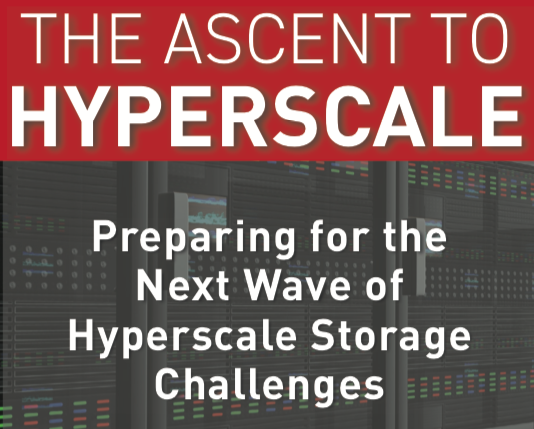Reading Time: 3 minutes Explosive data growth continues to be a top challenge for today’s organizations and this growth is only going to increase in the future. In fact, according to analyst firm IDC, by 2025 worldwide data will grow 61% to 175 zettabytes, with as much of the data residing in the cloud as in data centers.
Explosive data growth continues to be a top challenge for today’s organizations and this growth is only going to increase in the future. In fact, according to analyst firm IDC, by 2025 worldwide data will grow 61% to 175 zettabytes, with as much of the data residing in the cloud as in data centers.
New technologies and approaches are continually being created to help address this data storage deluge. Members of the Active Archive Alliance from Fujifilm Recording Media, U.S.A., Inc, Spectra Logic, StrongBox Data and Quantum recently shared their insights into what the future looks like for active archives and data storage in 2019. Here are some of their top predictions:
Artificial Intelligence Creates Demand for Active Archives
The evolution of deep learning, machine learning and artificial intelligence will continue to expand in 2019 across every industry as the digital transformation wave produces an explosion of big data. With these AI tools, organizations will be able to extract more value from their data than ever before giving rise to an insatiable demand for more data, more analytics…more competitive advantage. A dramatic increase in storage and specifically active archive will be required to cost effectively and efficiently provide accessibility to big data at scale.
Flash Will Gain Wide-Scale Adoption, But a Need to Store Everything Will Make Secondary Storage More Important Than Ever
In the coming year we will see wide-scale adoption of flash storage. Organizations of all sizes will include solid-state drive (SSD) for greater performance, energy savings, space efficiency, and reduced management. New technologies like integrated data protection, storage federation/automation, policy-based provisioning, tiered data movement, and public cloud integration will be built on top of this flash foundation.
With the increased adoption of flash, organizations will also face the challenge of how to affordably store the data that is not mission critical, but still has value and therefore cannot be deleted. With the move to flash organizations will utilize a secondary storage tier to affordably manage all the organizations data, and this will happen through intelligent data management software designed to move data to a more affordable tier, without sacrificing access and searchability of the data.
Shift From Managing Your Storage to Managing Your Data
Data, not the underlying physical storage, is what matters. However, traditional storage systems are “big dumb buckets” that provide precious little insight into what data is growing, what applications or users are accessing it, or what is consuming storage performance and why.
Next-generation storage systems are “data-aware,” with real-time analytics built directly into the storage itself, delivering real-time information on data and performance at massive scale providing insight into data and storage. As organizations better understand their data (how it is being generated, at what pace, by who, for what project) they are more informed as to how to plan and budget for the future growth of their data, and better understand how to move data to different tiers based on customized policies.
Cross-platform Storage Automation Reduces Costs, Increases Productivity
The reality is that there is not a “one-size-fits-all” storage solution that addresses the multiple requirements faced by most organizations. The result is that large environments typically rely on multiple storage vendors and point solutions to address the different performance and cost profiles needed for their data. The problem is this adds complexity for IT managers, requiring them to do more with static or shrinking operational budgets. This trend is driving a demand in the industry for solutions that provide automation of data and storage resource management across any storage type from any vendor. Such solutions leverage policy engines and management tools that are driven by multiple types of metadata about the files and their business value as they evolve over time. Such automation tools help data managers know what they have, and gives them control of cross-platform data migration, tiering, active archiving, and protection, without interrupting users. This type of metadata-driven automation will be an increasing trend over the next few years, because it provides demonstrable ROI by reducing OPEX and complexity for IT, breaking storage vendor lock-in, while increasing storage utilization efficiency and user productivity.
Rich Media Content Will Grow Exponentially, Across Many Industries
Video now constitutes 50% of all data. Rich media comprises our video surveillance; consumer images, voice and video; medical imagery, IoT, entertainment and social media. Large and unstructured data is often 50 times or larger than the average corporate database. Video is unique, and it is not typically a good fit for traditional backup; it cannot be compressed or deduplicated, it doesn’t work well with replication, snaps or clones, and ingest speed is critical. Rich media is projected to surpass 100 Zetabytes worldwide by 2020. Expect enterprise data services to be increasingly optimized for large or rich media data sets, with infrastructure optimized for ingest processing and the full life cycle management of forms of rich media.




 Explosive data growth continues to be a top challenge for today’s organizations and this growth is only going to increase in the future. In fact,
Explosive data growth continues to be a top challenge for today’s organizations and this growth is only going to increase in the future. In fact,